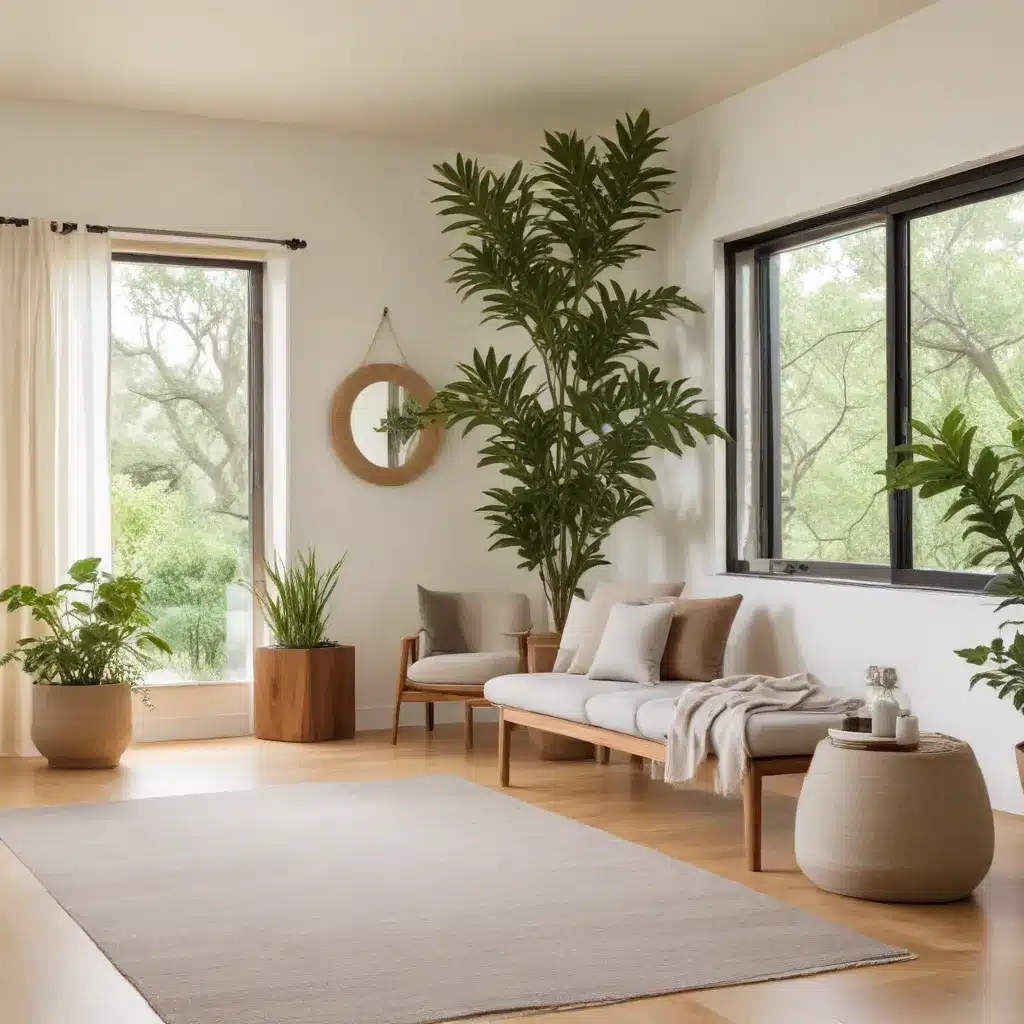
The Profound Impact of Our Spaces
As seasoned construction professionals and interior designers, we understand the profound impact our living and working environments can have on our mental, physical, and emotional well-being. The spaces we inhabit shape our moods, sleep patterns, and ability to relax in profound ways. From the colors we surround ourselves with to the lighting, furniture, and materials, each element plays a role in determining our overall sense of calm, focus, and inspiration.
However, the connection between our living spaces and our inner well-being runs even deeper. Our homes are a reflection of our inner world – the way we express our values, priorities, and personal aesthetic speaks volumes about our mental and emotional state. When we take the time to thoughtfully design our environments, we’re not just creating beautiful spaces; we’re cultivating a physical representation of our mindset and emotional landscape.
“If you’re not sure, glance around your living room, breathe deeply, and notice what sensations, feelings, memories, and emotions arise.” – Neil Seligman, The Conscious Professional
This powerful insight reminds us that our surroundings are inextricably linked to our overall happiness, optimism, and even our creative potential. By understanding this connection, we can leverage the power of interior design to foster mindfulness, reduce stress, and promote holistic wellness in our daily lives.
Designing for Mindful Living
At the heart of creating mindful environments is the understanding that our physical spaces can either support or hinder our ability to be present, centered, and at peace. As Jenny Albertini, a KonMari-certified organizational consultant and public health expert, explains, “When we make purposeful choices about what we want to live with, we also set intentions for how we want to live.”
One of the key strategies for cultivating mindfulness at home is to designate a dedicated space for meditation, reflection, or simple quiet time. As Neil Seligman suggests, setting up a meditation corner with a mat, cushion, and meaningful objects can transform a space into a true sanctuary. By creating a visual and physical cue for mindfulness, we’re more likely to engage in the practice regularly.
Beyond a meditation nook, Sarah Barnard, a WELL and LEED-accredited designer, recommends incorporating other design elements that support mindfulness, such as:
- Spa-like Experiences: Luxurious details like soaking tubs, aromatherapy showers, and weighted blankets can help create a sense of calm and relaxation.
- Clutter-free Spaces: Minimizing clutter and incorporating ample storage can contribute to a more organized, serene environment.
- Biophilic Design: Integrating natural elements, such as plants, natural materials, and views of the outdoors, can foster a deeper connection to nature.
- Personalized Oases: Designing private, customized spaces dedicated to wellness can visually reinforce the importance of self-care.
By thoughtfully curating our living spaces with these mindfulness-enhancing features, we can cultivate a sanctuary that nourishes our mental, emotional, and physical well-being.
Aligning the Built Environment with Public Health
The connection between our living spaces and our overall health and wellness extends beyond the individual level. As Burçak Altay and Nicole Porter highlight in their commentary, the physical environment can have a profound impact on public health outcomes, particularly in the areas of mental health, stress management, and attentional focus.
Environmental psychology research has demonstrated the restorative qualities of certain spaces, such as natural settings and well-designed indoor environments. By incorporating features that promote stress recovery, attention restoration, and a sense of safety and belonging, we can create built environments that support not just individual wellness, but the health and resilience of entire communities.
“Mindfulness and public health are largely aligned in their attunement to resilience; so too does the design and management of the environment necessitate attuned responses to the complex environmental challenges and threats of our time.”
As we navigate the intersection of mindfulness, public health, and the built environment, the need for interdisciplinary collaboration becomes increasingly clear. By aligning the insights and approaches of construction professionals, interior designers, and public health experts, we can develop holistic solutions that foster mindful, sustainable, and equitable communities.
Designing for the Future: Integrating Mindfulness and the Environment
Looking ahead, the integration of mindfulness and the physical environment holds immense potential for addressing global challenges related to health, well-being, and environmental sustainability. As Altay and Porter suggest, the synergy between inner transformation (cultivated through mindfulness practices) and outer transformation (manifested in our relationships with the natural and built world) can contribute to resilience at multiple levels – individual, community, and planetary.
This holistic approach is echoed by Jenny Albertini, who emphasizes the importance of addressing both the physical and emotional aspects of our environments. By pairing her expertise in public health and behavioral change with the principles of the KonMari Method, she helps clients create sustainable systems of order and organization that support their overall well-being.
As we continue to navigate the complexities of modern life, the role of the built environment in fostering mindfulness, reducing stress, and promoting public health will only become more crucial. By embracing a design philosophy that integrates the latest research, empathetic practices, and a deep understanding of human-environment relationships, we can create spaces that nourish the mind, body, and spirit – both for individuals and for the communities we serve.
At Local Builder London, we are committed to staying at the forefront of this evolving field. By partnering with leading experts in interior design, sustainability, and public health, we strive to deliver construction and renovation projects that elevate the human experience and contribute to the well-being of all who inhabit them. Contact us today to learn more about our holistic approach to designing mindful, wellness-focused environments.


